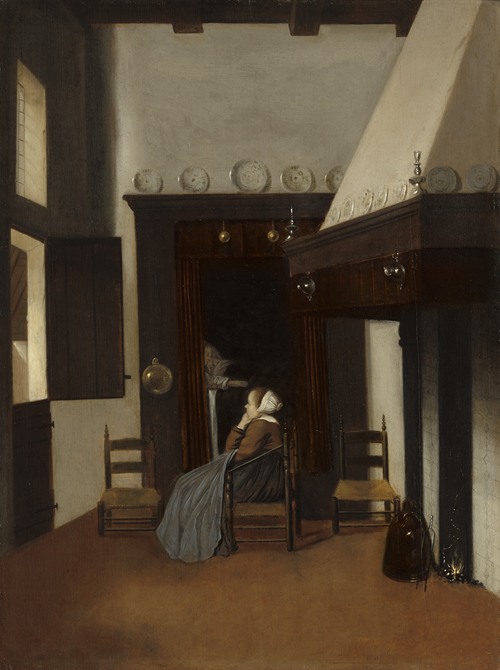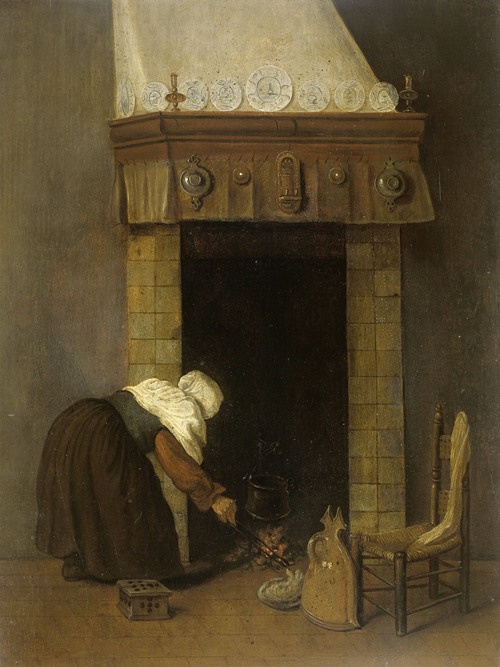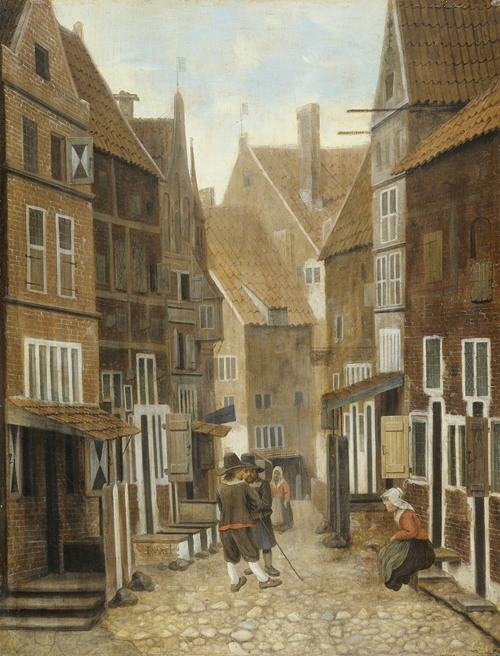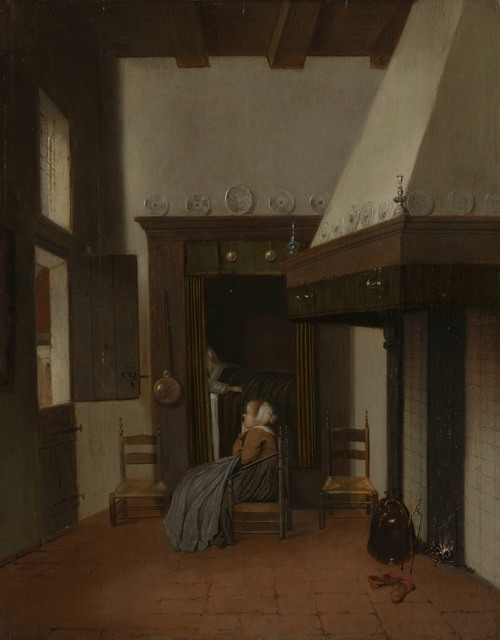




Jacob Vrel was a Dutch, Flemish, or Westphalian painter of interiors and urban street scenes during the Dutch Golden Age (1588-1672). He was active from 1654–1662.
Jacob Vrel is also referred to as Jan instead of Jacob(us); alternative spellings of his surname are Frel, Frelle, Vreele, Vrelle, and Vriel. Though Vrel's birthplace is unknown, scholars consider him a Dutch artist. He is considered to have worked in Delft and Haarlem.
Despite the many architectural elements, bread products or clothing of the figures in his paintings, art historians are unable to assign most of Vrels Street scenes to any particular city or region. As of 2021, two experts have recognized streets and buildings of the Dutch city of Zwolle, not far from the German border in three pictures.
According to the Netherlands Institute for Art History (Dutch RKD-Nederlands Instituut voor Kunstgeschiedenis), Vrel was a member of the same "school" or artistic style as Pieter de Hooch, showing simple intimate scenes of daily life in towns, often including studies in perspective. Though no evidence for a specific "school" exists, the center of influence seems to have been in the artistic centers of Haarlem and Delft, for artists born during the years 1620–1630. The painters listed by the RKD in this category are Esaias Boursse, Hendrick van der Burgh, Pieter de Hooch, Pieter Janssens Elinga, Cornelis de Man, Hendrick ten Oever, and Jacob Vrel.
Vrels works are sometimes confused with those by Esaias Boursse or Pieter de Hooch. Vrel often painted his signature on a strip of paper or cloth in his painting, reminiscent of medieval banners or scrolls.




